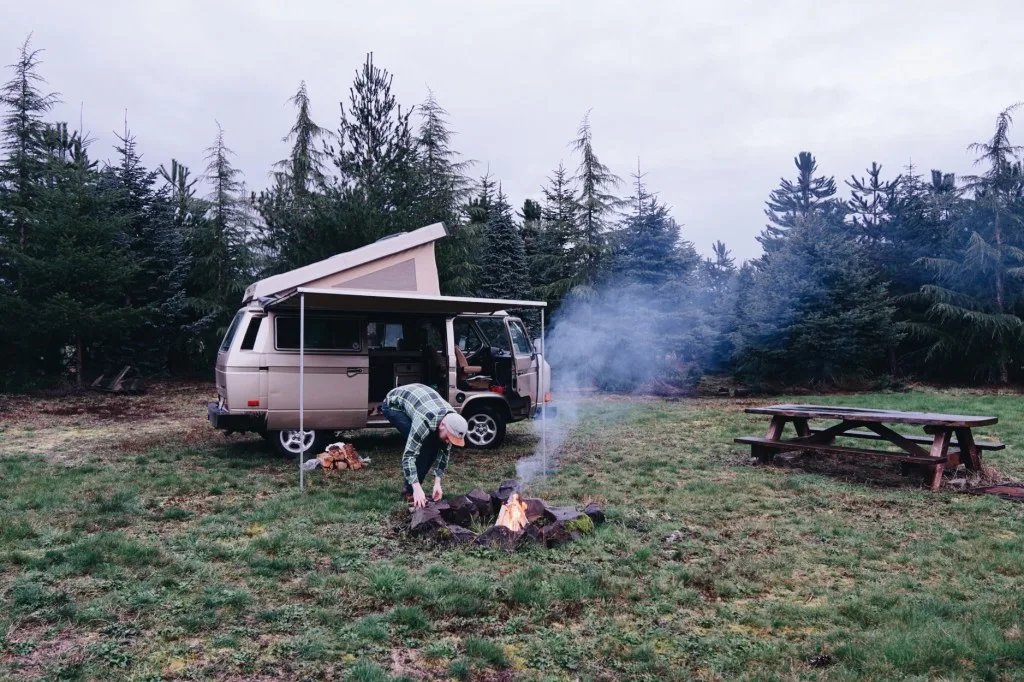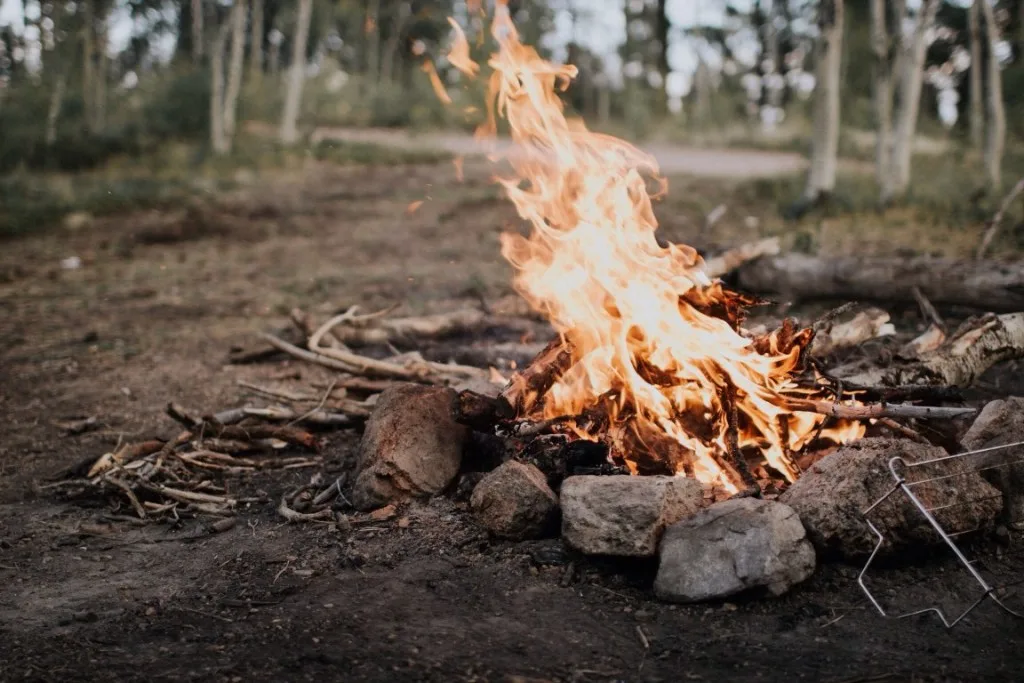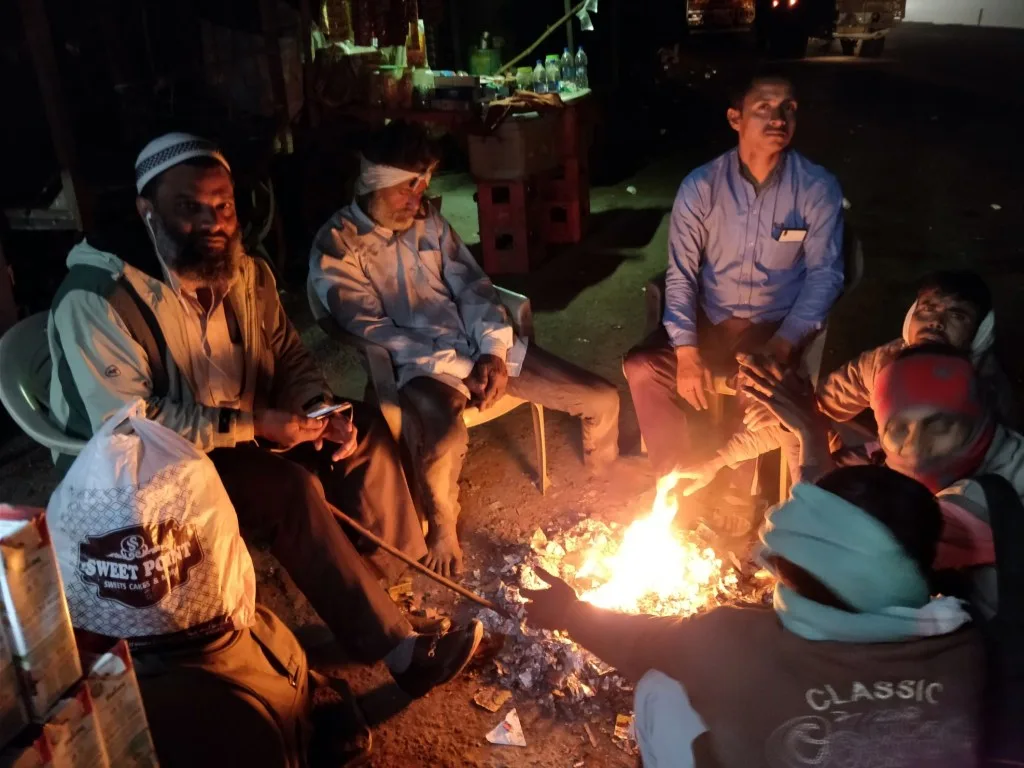There’s nothing like the feeling of building the perfect campfire, especially after a long day of travel or a cold day of exploring the great outdoors. Beyond the sense of pride at a job well done, the sound of fire crackling and the smell of wood burning can really put you in the camping mood.
On the other hand, there’s nothing like the feeling of trying to build the perfect campfire, only to have it fizzle out after a few minutes – or worse, never light at all. It’s frustrating, to say the least. But building the perfect campfire doesn’t have to be frustrating or complicated.
With the right supplies and a little know-how, you’ll never have to experience this frustration again!

Things You Need to Build a Campfire
As with any building project, before you get started, you need to make sure you have the right things on hand:
Permission
There may be fire restrictions depending on the county, state, campground, or park. Check with the campground or park management or look for posted signs indicating that campfires are allowed. If you’re not at a campground, but you do have internet access, a quick Google search for “fire bans” in your area can help.
When in doubt, don’t burn a fire.
It’s also important to state that “Leave No Trace” best practices mean following burn bans and not creating new burn spots.

Fire Pit or Fire Ring
It’s important that you build your campfire in a fire pit or fire ring as this will keep the fire safely contained. If you are at a campground or RV park and a fire pit or ring is available onsite, use it! Otherwise, you can purchase portable fire pits, like this pop-up version, that can easily be stored and reused.
Tinder and Kindling
Tinder and kindling are the base of your fire. Tinder is light, airy materials that burn up quickly, such as dry leaves, dry grass, dry tree bark, wood shavings, twigs, pine needles, paper, lint, cotton balls, or even the fluffy, cotton-like material found in cattails.
Kindling is slightly larger, yet, still very flammable materials, like pencil-sized sticks or narrow scraps of firewood.

Dry Wood
This one seems obvious, but we’ve all done it. We’ve all tried to start a fire with wet wood, only to be left disappointed.
Remember, we’re trying to avoid frustration here, so dry wood is essential. Gather pieces of chopped firewood or fallen branches (don’t take branches directly from a tree) the width of a water bottle or larger. How do you know if the wood is dry? Chopped firewood will generally be free from mold and fungi and will sound hollow when two logs are banged together.
Fallen branches will be more brittle and won’t easily bend without cracking or snapping.
Firestarter
If all else fails and you can’t find dry wood or a good source of tinder, a firestarter should do the trick. Firestarters are artificial logs that usually contain chemicals to make them burn easier and longer than traditional firewood.
Firestarters can often be found in local supermarkets or home improvement stores, and are lifesavers on rainy days.

Matches or Lighter
Lastly, you can’t build the perfect campfire without fire itself – or at least a spark! Lighters and matches come in a variety of sizes and types, including windproof and waterproof versions.
However, you really don’t need anything fancy to get the job done. A simple cigarette lighter or traditional box of matches will do just fine as long as they have been stored in a dry place.
Different Types of Campfire Building Techniques
There’s no one right way to build a campfire. However, there are plenty of wrong ways! These styles should give you a great starting point.
Cone
This classic campfire shape is known to burn faster than other techniques but tends to be a fan-favorite due to its simplicity.
Begin with a small pile of tinder in the center of your fire pit, then arrange your kindling into a cone shape over the tinder. Next, place your dry wood in a larger cone shape above the smaller kindling cone. Be sure to leave some room between your logs at the base of the cone for airflow.
Log Cabin
If you ever played with Lincoln Logs as a child, building a log cabin campfire will come naturally to you. In the center of your fire pit, start with a small pile of tinder and cover with kindling shaped into a cone.
Then take two pieces of dry wood and place one on each side of the kindling cone. Next, stack two more pieces of dry wood on top of the others, but perpendicular, forming an open square with the kindling in the middle. Continue this pattern until you’ve reached the desired height.
Logs smaller in diameter tend to work better for this configuration.
Star
The beauty of the star technique is it burns slowly, making it a great choice if you need your campfire to last long into the night. Start with the traditional tinder bundle and kindling cone in the center, like with the other fire building techniques above.
Once that’s done, arrange five to six pieces of dry wood flat on the ground around the kindling cone with one end of each log touching the cone and the other ends jutting out from the center.
This campfire will resemble an asterisk when you are finished.
Platform
Unlike other campfires that start with the kindling cone and burn from the ground up. This technique ends with the kindling cone and burns from the top down, leaving you with a hot bed of coals that is perfect for cooking.
Begin by laying four pieces of wood in a parallel row to form the base, then lay three pieces of wood perpendicular to and on top of the base. Next, lay two pieces of wood, again, perpendicular to the three below. Finish your platform with a pile of tinder on top covered by a kindling cone.
The platform technique will resemble a pyramid.
How to Build the Perfect Campfire
Now you’re ready to build the perfect campfire! Once you’ve gathered your supplies and have arranged your dry wood using your favorite technique from above, there’s only one thing left to do: light your fire!
Using dry matches or a lighter, light the tinder first. It may help to blow on the tinder very gently to infuse the small flames with air. These flames will ignite the kindling, which will in turn ignite the firewood. It’s really that simple!

Keeping the Fire Burning
Let the wood burn for a while, being careful not to add more wood too soon. Too much wood too soon can smother your campfire. Creating good airflow between the logs is key!
Additionally, refrain from constantly poking and prodding the fire as this can also cause your fire to go out. Occasionally shifting a log to remove the ash and expose new wood is enough, just don’t overdo it!
Campfire Safety Tips
Again, make sure you are allowed to burn and that you build your fire inside of a fire pit or fire ring to avoid spreading. Also, don’t build your campfire too close to dry grass, brush, or low hanging branches.
Especially in a dry season, one spark is all it takes to start a wildfire. You should also supervise children and pets around campfires, and never leave your fire unattended.
Lastly, make sure you leave it dead out when you’re done. The best way is to pour water over the fire, making sure to completely extinguish the embers. Be mindful of the steam because you can get scalded if you’re too close.

If water is unavailable, you can cover the coals with dirt or sand. However, this second method does take longer and is not as effective as water at bringing down the temperature of the coals. The coals should always be cool to the touch before you walk away. 88% of wildfires are caused by humans. Don’t be the cause. Be the prevention!
Building the perfect campfire can feel daunting; but once you understand the basics, it’s like riding a bike. You’ll be able to do it again and again with zero frustration and more relaxation, which is the whole point of a campfire anyway.
Discover the Best Free Camping Across the USA
To be honest with you, we hate paying for camping. There are so many free campsites in America (with complete privacy).
You should give it a try!
As a matter of fact, these free campsites are yours. Every time you pay federal taxes, you’re contributing to these lands.
Become a FREE CAMPING INSIDER and join the 100,000 campers that love to score the best site!
We’ll send you the 50 Best Free Campsites in the USA (one per state). Access the list by submitting your email below: